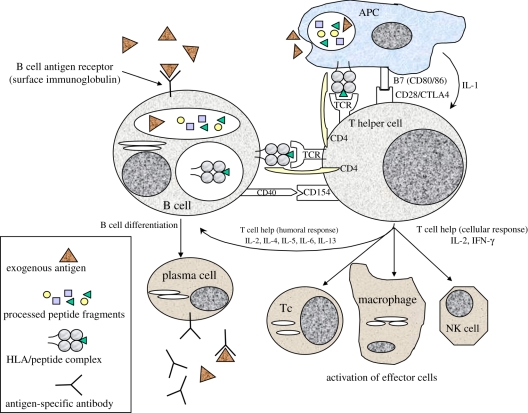Figure 1.
Adaptive immune response to foreign antigen. Exogenous particulate or soluble antigens (e.g. glycoproteins) are taken up by antigen-presenting cells (APCs) and processed into peptide fragments that are translocated to the HLA class II peptide-binding groove. Exogenous antigen may also be recognized and internalized by antigen-specific B cells through their surface immunoglobulin (Ig) receptor. CD4 positive (HLA class II restricted) T ‘helper’ cells bearing antigen-specific T cell receptors (TCR) recognize self HLA/foreign peptide complex on APCs (signal 1) and engage with costimulatory molecules (e.g. CD80/CD28, CD40/CD154) (signal 2), resulting in T cell activation. Activated T helper cells secrete cytokines including IL-2 and IFN-gamma to recruit and activate antigen-specific CD8 (HLA class I restricted) cytotoxic T lymphocytes (Tc), and non-antigen-specific effector cells (macrophages and natural killer (NK) cells). Alternatively, T helper cells may secrete cytokines, such as IL-4, IL-5 and IL-13, that stimulate differentiation of antigen-specific B cells into antibody-producing plasma cells.

